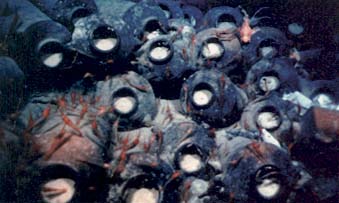Titanic Explorer and Archaeologist Team Up

Two Phoenician shipwrecks were discovered this summer in the depths of the Mediterranean Sea, about 30 miles from the Israeli coastal city of Ashkelon. The finds were made by American underwater explorer Robert Ballard, discoverer of the Titanic, and Harvard University archaeologist Lawrence Stager, director of the excavations at Ashkelon.
The two ships are the world’s oldest known deep-sea wrecks. The longer craft, measuring about 60 feet, is the largest pre-classical vessel ever found. The ships, which were found sitting upright in about 1,500 feet of water, are believed to have capsized in a storm in about 750 B.C., after setting sail from the Phoenician port of Tyre. Their cargo of wine, housed in hundreds of large ceramic jugs called amphorae, was likely bound for Egypt or the Phoenician colony of Carthage. Amazingly, the amphorae were found intact and in pristine condition.
The discovery of the jars was “one of our greatest moments,” Stager told a Tel Aviv press conference. Owing to the bitterly cold temperatures, lack of sunlight and intense pressure at such depths, the jars were well preserved, though the vessels’ wood encasement had disintegrated (the shape and length of the ships are deduced from the position of the amphorae).
Already a library member? Log in here.
Institution user? Log in with your IP address.

